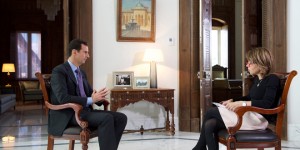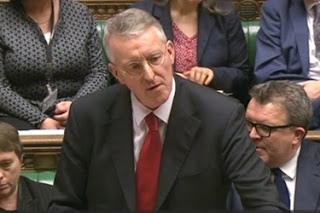The Second Cold War. The US Might Come Out on the Losing Side…
December 8th, 2015 by Steffen A. Woll
In the light of the conflicts in Ukraine and Syria, there has been much talk about the clouding of US-Russian relations. Some voices in the Internet’s alternative media have pointed to the possibility that these conflicts might lead to a new major war, while social networks like Twitter saw the usage of the hashtags #WorldWarIII and #WorldWar3 explode after Turkey shot down a Russian Sukhoi Su-24 jet in the vicinity of the Syrian border. Headlines in mainstream media outlets like Foreign Policy and the Guardian also proclaimed, “Welcome to Cold War III” and asked “are we going back to the bad old days?”.
This article suggests that although the ideological division of the Cold War ended de facto with the collapse of the Soviet Union, American geopolitical schemes to contain Russian power abroad have never really been abandoned. Throughout the 1990s and until today, US policymakers have been determined to wage overt or covert proxy wars with the aim of curbing its former adversary’s political, economic, and military influence. Chechnya, Ukraine, and Syria are the key spots where the logic of this second Cold War is played out.
A short glance over the state of the world today and its representation in the media suffices to identify a growing number of actual and potential centers of conflicts:
Civil war is raging in parts of Ukraine, military tensions are growing in the South Chinese Sea, and the Middle East is more of a mess than ever. Nonetheless, some have suggested that the actual number of armed conflicts has actually reached a historical low. But this assertion is solely based on statistical preference. It is true that interstate (conflicts between two or more states) wars are on the decline. Instead, wars today are much more likely to take the form of intrastate conflicts between governments and insurgents, rather than national armies fighting over territory. As demonstrated to an outstanding degree in Syria, these conflicts are more and more internationalized and involve a bulk of non-state actors and countries who try to reach their goals through proxies rather than direct involvement, which would require “boots on the ground.”
But let’s start at the end. The end of the Cold War, that is. The situation during the years of systemic antagonism between the Eastern and Western Blocs has sometimes been captured in the image of three separate “worlds”: the capitalist First World, the socialist Second World, and a Third World. The latter term was not used as a marker for impoverishment and instability as it is commonly understood today, but as a postcolonial alternative “third way” for those newly independent states that struggled to avoid their renewed absorption by the two towering ideological empires. One strategy through which developing countries attempted to duck the neocolonial policies of the Cold War Blocs was by founding the informal Non-Alignment Movement (NAM) in 1961, initiated by India, Indonesia, Egypt, Ghana, and Yugoslavia. Counting 120 members as of now—in fact a large part of the global South—the movement’s anti-imperialist and anti-colonial stance has lost much of its bargaining power after the end of the Cold War.
Still, the final document of the movement’s 1998 summit in Durban, South Africa suggests that the end of the long-standing bipolar power configuration has by no means led to the betterment of those countries’ situation. Unipolar American dominance and the collapse of the Soviet Union instigated what was understood to be “a worrisome and damaging uni-polarity in political and military terms that is conducive to further inequality and injustice and, therefore, to a more complex and disquieting world situation.” This analysis turned out to be correct in many respects, particularly concerning the period of the 1990s.
While the Clinton years of domestic prosperity saw the US economy achieve the rarity of a budget surplus, the citizens of its erstwhile antagonist were (probably with the exception of Boris Yeltsin) experiencing the more sobering effects of Russia’s political and economic paradigm shift. Democratic Russia struggled to consolidate its deeply shaken economy in an environment ripe with organized crime, crippling corruption, and under the doubtful patronage of oligarchs like Boris Berezovsky who controlled the influential television channel ORT and whom Ron Unz in “Our American Pravda” described as “the puppet master behind President Boris Yeltsin during the late 1990s.”
The actual situation in the former Soviet heartland during the 1990s was utterly different from what American elites and media often depicted as a “golden age” of newfound democracy and a ballooning private sector. From the perspective of many US elites, the country’s plundering by oligarchs, ruthless criminal gangs, kleptocratic politicians, and corrupt military officers was welcomed as a convenient, self-fulfilling mechanism to permanently destabilize its mortally wounded adversary. But Russia never completed all the stages of collapse, not least because Yeltsin’s successor Vladimir Putin eventually took legal action to put such “businessmen” like Roman Abramovich and Berezovsky out of business. The latter was forced to seek refuge in London, from where he threatened to use his £850m private fortune to plot “a new Russian revolution” and violently remove his former protégé from the Kremlin.
The chaotic and aimless term of the alcoholic Yeltsin is often regarded as a chiefly positive time in which the East and the West closed ranks, although politicians and neoconservative think tanks in reality conducted the political and economic sellout of Russia during these years. The presidency of Vladimir Putin, while anything but perfect and with its own set of domestic issues, still managed to halt the nation’s downward spiral in many areas. Nevertheless, it is persistently depicted by Western elites and their “Pravda” as dubious, “authoritarian,” and semi-democratic at best.
Thus, in spite of Francis Fukuyama’s triumphalist proclamation of the “End of History” after the fall of the Berlin wall that supposedly heralded the universal rein of liberal democracy, the legacy of the Cold War is anything but behind us. Ostensibly, the current geopolitical situation with its fragmented, oblique, and often contradictory constellations and fault lines is utterly different from the much more straightforward Cold War dualism. Of the Marxist ideology only insular traces remain today, watered down and institutionalized in China, exploited in a system of nationalistic iconography in Cuba, and arranged around an absurdly twisted personality cult in North Korea. As of 2015, Russia is an utterly capitalistic nation, highly integrated in the globalized economy and particularly interdependent with the members of the European economic zone. Its military clout and budget ($52 billion) are dwarfed by US military spending of $598.5 billion in 2015. Even more importantly, after 1991 Russia had to close down or abandon many of its important bases, ports and other military installations as a result of the NATO’s eastward expansion.
Nevertheless, the sheer size of its territory and its command of a substantial nuclear weapon arsenal, cement Russia’s role as a primary threat to American national interests. This is illustrated by the fact that since three and a half decades, the US has covertly supported radical Islamic movements with the goal to permanently destabilize the Russian state by entrapping it in a succession of messy and virtually unwinnable conflicts. Pursued openly during the Soviet-Afghan War of the 1980s, this scheme continued to be employed throughout the 1990s during both Chechen Wars, as well as in Russia’s so-called “near abroad” spheres of influence: Dagestan, Ingushetia, South Ossetia, and other former Soviet vassal republics in the Caucasus, which have constantly suffered from extremists who exploit the lack of governmental pervasion in their remote mountain regions. These regions are home to over 25 million ethnic Russians and important components of the country’s economy. After the Soviet-Afghan War and the CIA’s buildup of Osama bin-Laden’s “resistance fighters,” American policymakers recognized the destabilizing potential inherent in the volatile political and sectarian configurations in the Islamic countries that encircle the post-Soviet Russian borderlands.
Hence, despite many political ceremonies, pledges of cooperation, and the opening of Moscow’s first McDonalds in 1990, this policy was never fully abandoned. As a matter of fact, peaceful political coexistence and economic convergence never were the primary goals. Democratic Russia with its allies, military potential, and possible Eurasian trade agreements that threaten to isolate or hamper US hegemony was and still is considered a menace to American ambitions of unipolar, universal dominance.
Since the First Chechen War in 1994, Russia’s prolonged struggle against Islamic terrorism has for the most part been disregarded by Western media. Particularly after 9/11, the “war on terror” acted like a black hole that sucked up the bulk of the Western media’s attention. When the acts of terrorism on Russian soil became too horrifying to ignore—the 2002 Moscow theater hostage crisis and the 2004 Beslan school siege in particular—the massive death tolls were blamed on the drastic responses of Russian security forces who were not adequately prepared and overwhelmed by the vicious and meticulously planned attacks. In Beslan, the death of hundreds of innocents (186 children were murdered on their first day at school) was indirectly condoned and sardonically depicted as the consequences of the “separatist movement [and its] increasingly desperate attempts to break Russia’s stranglehold on its home turf.” Truly, to describe those who shoot children in front of their parents and vice versa as “separatists” and glorify them as “rebels” who act in self defense against an “authoritarian” regime demands a very special kind of callous apathy.
In a 2013 article that examined the Chechen descent of the suspects behind the Boston Marathon bombing, retired FBI agent and 2002 Time Person of the Year Coleen Rowley exposed “how the Chechen ‘terrorists’ proved useful to the U.S. in keeping pressure on the Russians.” She explicitly refers to a 2004 Guardian piece by John Laughland, in which the author connects the anti-Russian sentiments in the BBC and CNN coverage of the Beslan massacre to the influence of one particular organization, the American Committee for Peace in Chechnya (ACPC), whose list of members reads like “a rollcall of the most prominent neoconservatives who so enthusastically (sic) support the ‘war on terror,’” among them Richard Perle, Elliott Abrams, James Woolsey, and Frank Gaffney. Laughland describes the ACPC as an organization that
heavily promotes the idea that the Chechen rebellion shows the undemocratic nature of Putin’s Russia, and cultivates support for the Chechen cause by emphasising the seriousness of human rights violations in the tiny Caucasian republic. It compares the Chechen crisis to those other fashionable “Muslim” causes, Bosnia and Kosovo – implying that only international intervention in the Caucasus can stabilise the situation there.
There are three key elements in the organization’s lobbying strategy to denigrate Russia and promote an intervention in Chechnya that serve to unmask a larger pattern behind the US foreign policy after 9/11. First, the labeling of a particular leader or government as “authoritarian” or in some other way “undemocratic” (Vladimir Putin, in this case). Second, the concept of an oppressed yet positively connoted population that strives for freedom and democracy (Chechen terrorists with ties to a-Qaeda, in this case). Finally, the stressing of “human rights violations” that warrant an intervention or economic embargo.
If all of these conditions are satisfied, the violation of the borders of a sovereign state is seen as justified (UN mandate not needed), enabling the US to emerge as a knight in shining armor and champion of human rights, bolting to the rescue of the world’s downtrodden, while covertly achieving an utterly different goal: To further the logic of a second Cold War through proxy warfare and weaken Russian by diminishing its foothold in its surrounding “near abroad” regions, which in many respects represent vital interests, both economically and strategically.
Swap out names and dates and it becomes evident that the same tripartite strategy was used to justify every recent intervention of the US and other NATO members, in Iraq (2003), Libya (2011), and Syria (since 2011). Interventions that were legitimized under the banner of humanitarian relief through the removal of “authoritarian” tyrants and supposed dictators and which have resulted in the deaths of an estimated 500.000 people, in Iraq alone. When the ASPC’s made its appeal regarding Chechnya in 2004, mind you, only one year had passed since the Abu Ghraib torture photos were leaked and two years since the first inmates arrived in the extralegal detention center at Guantanamo Bay.
Regarding the sweltering conflict in Ukraine’s Donbass region, the key dynamics are similar. President Viktor Yanukovych, accused by the Euromaidan movement—fueled by aggressive US and EU media propaganda and enticed with promises of lucrative NATO and EU memberships—of “abusing power” and “violation of human rights,” was forced to resign and replaced with a ultranationalist, anti-Russian and pro-Western government. Again, this campaign had nothing to do with actual humanitarian relief or concerns about the country’s democratic integrity. Instead, the hopes of a whole generation for a better future under Western influence were exploited by US policymakers who hoped to stifle Russia’s geostrategic elbowroom by ousting the naval bases of its Black Sea Fleet from the Crimea.
These bases, mostly located in the city of Sevastopol, have been the home port of the Russian navy for over 230 years, and are vital because they provide the only direct access to the Black Sea and (through the Bosporus strait in Turkey) to the Mediterranean. Any expansion of NATO towards these bases had to be regarded as a direct threat, leaving the Russian government practically no choice but to protect them with all means necessary. However, in the stories emanating from Western mainstream media, these bases were showcased as an occupation of sovereign Ukrainian territory and used as proof of Russia’s aggressive, “authoritarian,” and imperial aspirations. In reality, Ukraine and Russia signed a Partition Contract in 1997, in which the Ukraine agreed to lease major parts of its facilities to the Russian Black Sea Fleet until 2017, for an annual payment of $98 million.
Along the lines of the currently revitalized genre of alternate history, let’s briefly indulge in the notion that we were still living in the ideologically divided world of the Cold War, in which the Warsaw Pact still existed. For a second, imagine if Mexico or Guatemala or Canada expressed their desire to join said pact and invited its troops to conduct military exercises at their shared border with the US. Even without the existence of an American naval base in that country, how do you think the US would react to such a scenario? Would it stand by idly and let itself be surrounded by its adversaries? For an even more striking parallel, take the Cuban Missile Crisis of 1962. The American military actually has a naval base there—Guantanamo Bay, home to the infamous detention camp. Many historians see the deployment of Soviet missiles and troops on the island as the closest that humanity ever came to entering World War III and mutually assured destruction (MAD). With its support for “regime change” in Ukraine and extension of the NATO to the Russian borders, the US today is engaged in the same old Cold War superpower games that the Soviets played in Cuba 53 years ago. In fact, we should think of Ukraine as being situated in Mother Russia’s “backyard.”
Thousands of miles away from the coasts of North America, the Middle East is the region that Uncle Sam seems to regard as his very own backyard. Many consider George W. Bush’s “War on Terror” after 9/11 and the subsequent interventions in Iraq and (to a lesser degree) Afghanistan as those catastrophic policy decisions that resulted in the sociopolitical destabilization of large parts of this region, resulting in the death, injury, and displacement of millions. In Iraq, Libya, and Syria, the spurious US rhetorical agenda of removing “tyrants” and endowing the local demographics with the liberating gift of democracy has in fact produced vast ungoverned spaces where militant groups like the al-Qaeda offshoot Jabhat al-Nusra and the Islamic State (also known as ISIS, ISIL, or Daesh) were able to carve out their “caliphates” and claim other territorial prices. For a long time, the rapid expansion of the Islamic State and its death-loving, apocalyptic ideology was resisted only by the Syrian Arab Army (SAA), the paramilitary National Defense Forces (NDF), and Kurdish Popular Protection Units (YPG). The SAA alone has lost as much as 200.000 soldiers in its struggle against various terrorist factions since March 2011.
US politicians and media have expressed their hopes that the Russian intervention to assist the Syrian government in its resistance against these Western, Saudi, and Turkey-backed groups will result in a military and economic debacle, comparable to the Soviet-Afghan war, which lasted well over nine years. It was during the course of this brutal and protracted conflict that US policymakers realized that there was really no need to shed American blood in order to deal the death blow to the Soviet Union. They drew their lessons from the CIA’s countless ventures in South American “nation building,” where a government’s legitimacy and an opposition’s status as either terrorists or freedom fighters depended on their usefulness for American national interests, often accoutered in pithy terms like the “war on drugs.”
Since the days of Pablo Escobar, however, US foreign policy has shifted its main focus towards the Middle East, where the long-term goal has been to weaken the enemies of Israel and strengthen the enemies of Iran. Other goals are to guarantee American access to oil and other natural resources, to establish military bases and consolidate the network of troops abroad, and to secure arms deals for the one-percenters who preside over what president Eisenhower cautioned his nation about in his farewell address: the “military-industrial complex.” As a consequence of the failures in Iraq and Afghanistan, the Obama administration has shifted its strategy towards aerial and drone only warfare combined with the support and (illusion of) control over local militant factions.
Among the many groups fighting in Syria, the Free Syrian Army (FSA), also known as “moderate rebels,” is the US faction of choice. Much like the bin Laden’s Mujahideen fighters in 1980s Afghanistan, they are armed with the help of the CIA. In spite of their apparent moderation, however, a wealth of evidence suggests that this group is directly responsible for a multitude of massacres, mass executions, the ethnic cleansing of non-Sunni citizens, and eating the hearts of their fallen enemies.
The FSA has also been a suspect in the 2013 Ghouta chemical attacks, which some have claimed the US used as a false flag operation to engender international support for the violent removal of the Syrian government. The subsequent UN investigation however failed to establish any conclusive evidence concerning the perpetrator of the war crime and concluded that the sarin gas used in the attacks had most certainly been removed from government arsenals. Based on this information, US, UK, and French leaders and media outlets insisted that the Syrian government had to be the culprit, and immediately pressed the international community to support an intervention with the goal of eradicating Syria’s alleged arsenal of nerve gas and other potential WMDs. This all begins to sound very familiar. Of course, they also requested the bolstering of the “moderate opposition.” Interestingly, though, the official UN report, “careful not to blame either side,” let on that investigators were actually being accompanied by rebel leaders at all times. Moreover, they repeatedly encountered “individuals […] carrying other suspected munitions indicating that such potential evidence is being moved and possibly manipulated.” On page 13, the report goes on to state that: [a] leader of the local opposition forces […] was identified and requested to take ‘custody’ of the Mission […] to ensure the security and movement of the Mission, to facilitate the access to the most critical cases/witnesses to be interviewed and sampled by the Mission […].
Recently, Mr. Obama and Mr. McCain have protested that their “moderate rebels” were being targeted unjustly by Russian airstrikes in Syria, complaining that “from their [i.e., the Kremlin’s] perspective, they’re all terrorists.” Sometimes, one is inclined to advise them, it can be wise and healthy to assume an outsider’s perspective and check if your reality still coincides with the facts that so many know are true about the FSA. These facts can be broken down to a very short yet concise formula: If it looks like a terrorist, if it talks like a terrorist, if it behaves like a terrorist—it probably is a terrorist.
Instead, the CIA is still supplying the “activists” with outdated-yet-deadly weapons from Army surplus inventories, including hundreds of BGM-71 TOW (“Tube-launched, Optically tracked, Wire-guided”) anti-tank missile systems, which the terrorists use against hard and soft targets alike. The same weapon platform can be seen in action in a recent FSA video that shows the destruction of a Russian helicopter that was sent to extract the Russian pilots at the crash site of their downed Su-24 plane on November 24, 2015. On the same day, another US-supplied TOW missile was used in an ambush targeting a car occupied by RT news journalists Roman Kosarev, Sargon Hadaya, and TASS reporter Alexander Yelistratov in Syria’s Latakia province.
The FSA and other groups, branded as “moderates” who fight against the “authoritarian” forces of tyranny (just like a certain “Saudi businessman” back in the day), function as US proxies in Syria, just like al-Qaeda did in the heyday of the Soviet-Afghan War. They are dangerously unstable pawns in a global strategy to secure American and Israeli interests in the Middle East, irrespective of the millionfold suffering and uprooting of entire societies caused by their crimes, the majority of which is directed towards other Muslims.
Commenting on the Russian military intervention at the invitation of the Syrian government, Mr. Obama said that he had no interest in turning this civil war into a proxy war between Russia and the United States, emphasizing that “this is not some superpower chessboard contest.” But this is exactly what US foreign policy, both Republican and Democrat, has done, starting with the end of the Soviet Union and lasting until this very moment. The only difference now being that the Libya-proven rhetorical strategy of (illegal and mandate-less) intervention via “no-fly zones,” “humanitarianism,” and “regime change” did not have the desired effect in Syria because Iran, Lebanon, and Russia did not abandon their ally. Their combined effort succeeded in fending off an unprecedented onslaught of extremists that infiltrated the country, often across the Southern Turkish border, armed with the money of American taxpayers and Wahhabi sheiks.
The Syrian conflict can no longer be described as a civil war. It may have started as one during the ill-fated “Arab Spring” of 2011, when armed “protesters” (i.e., FSA terrorists) murdered several policemen and set government buildings on fire in Daraa, provoking a violent backlash from government forces. The ensuing nationwide chaos was spun by the Western mainstream media troika, namely those media outlets that serve as propaganda tools for the US political and financial elites and who fabricated the myth of the tyrant who massacred peaceful protestors—to be readily sucked up by their indoctrinated clientele.
As a result of the “moderate’s” recent setbacks, the official American position, insofar as its mixed messages can be deciphered, has boiled down to a butt-hurt attitude and passive aggressive lecturing about how to distinguish between varying degrees of moderation among mass-murdering lunatics. Outmaneuvered and publicly exposed, all that is left for Mr. Obama seems to be to pick up the pieces and save some face by accepting Mr. Putin’s offer to join a united front against terrorism in Syria. But such a step seems unthinkable in this ongoing Cold War between Russia and the US. Instead, the most powerful man on earth talks about climate change as the most pressing problem of our times. When it comes to ISIS, he has said he wanted to “contain” them. Meanwhile, tensions are rising as Turkish president Erdogan, on an power trip after his surprising landslide victory in November’s general elections, apparently collaborated with ISIS and risked provoking an NATO Article 5 response by downing a Russian Su-24. On the other side of the equation, Russia’s decision to intervene on behalf of the Syrian government reveals a twofold strategy: On the one hand, trough its direct action it positions the Putin government as being opposed to the fatal logics of proxy warfare. On the other hand, it simultaneously exposes the catastrophic flaws of Mr. Obama’s strategies in Syria and the Middle East.
All these developments do not necessarily mean that we are heading for World War III—although logic dictates that it will happen at some point in the future. In reality, though, a full-on nuclear confrontation would require a massive unraveling of the still sufficiently functional channels of political cooperation and interstate diplomacy. International security and economic communities as well as overlapping alliances like the United Nations, NATO, OSCE, and BRIC all indicate a high level of international integration.
Nonetheless, the geopolitical decisions of the last years herald the start of a new period in political history that indeed corresponds to a Cold War constellation. Particularly US foreign policy is currently undergoing the revival of a more offensive realism, visible in recent demonstrations of power in NATO’s Eastern border states, pushing of the TPP agreement in the Pacific economic area, and aggressive patrolling of the South Chinese Sea. In fact, the avoidance of superpower confrontation at all costs seems to increasingly take a back seat these high-risk maneuvers.
In the late 1940s the first Cold War began as a war of the words when the powers who had together defeated Nazi Germany started to level criticism at their respective global policies. With the help of their media and propaganda sources, their different stances and perspectives solidified and eventually developed into monolithic ideologies. These in turn spawned the geopolitical doctrines that warranted the replacement of any open (i.e., nuclear) confrontation with confined proxy wars as in Korea, Vietnam, and Afghanistan. A similar erosion of mutual trust, respect, and solidarity is taking place now as the outsourced US-Russian conflicts in Ukraine and Syria remain unsolved. Again, the second Cold War arises as a war of the words while negative sentiments are allowed to petrify and the glacial rhetorics of mistrust and veiled threats gradually begin to replace talk about common interests and cooperation. The influential and policy-shaping Foreign Affairs magazine already struck the right chords of the passive-aggressive Cold War parlance by titling, “Putin’s Game of Chicken: And How the West Can Win.”
At the end of the day, this exact attitude could be one of the reasons why the US might come out on the losing side of this conflict. Because they have not yet realized this is not a “game of chicken” anymore. In fact, this is no longer the same easy game of manipulation that the US played during the 1990s by throwing cheap shots at a collapsing state. The deployment of its air force in Syria is not least a signal to the American establishment that Russia in 2015 no longer stands at the sidelines and watches begrudgingly as the US and its allies commence their disastrous policies in the Middle East.
When Mr. Obama asserted that “this is not some superpower chessboard contest,” he therefore either told a lie or he demonstrated his government’s utter cluelessness with regard to the actual situation and consequences of their actions in Ukraine, Syria, the South Chinese Sea, and other hotspots of the second Cold War. Both possibilities do not bode well for the future.
Steffen A. Wöll is currently enrolled in the American Studies Master’s program at Leipzig University. His research interests include foreign policy, the Middle East, popular culture, as well as radical millennialist and environmentalist movements in the US.

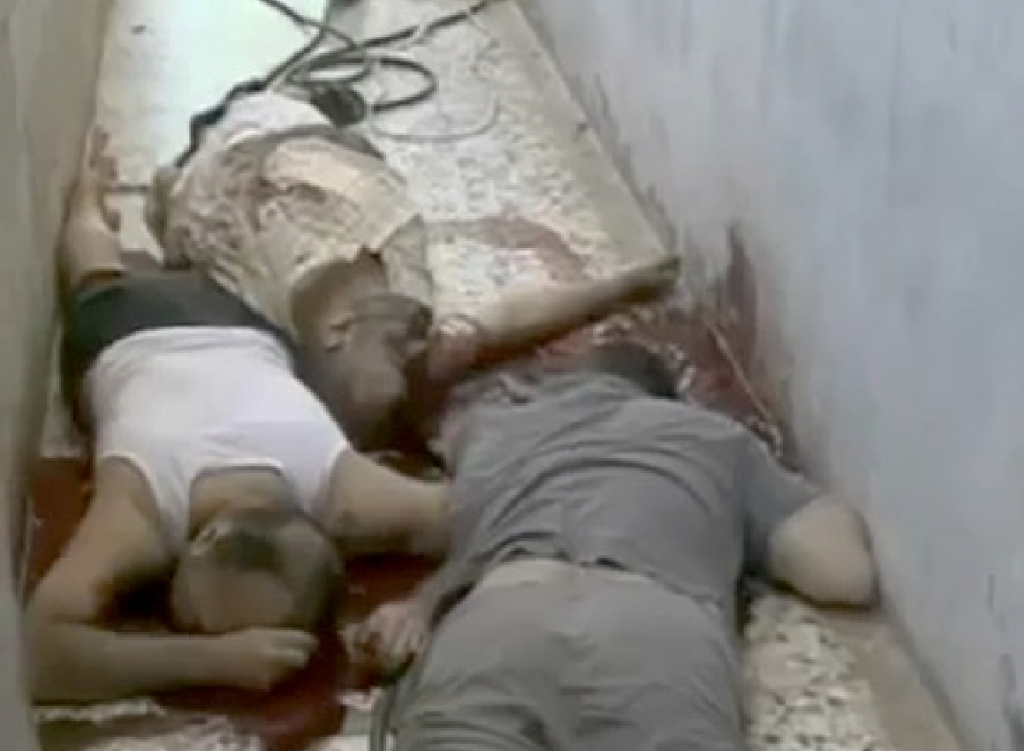
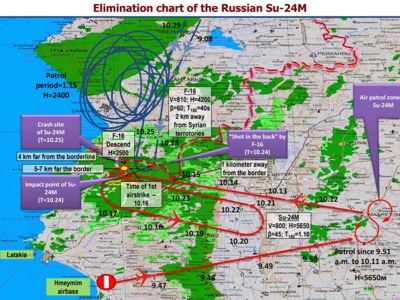
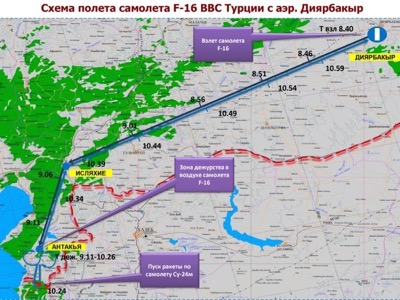
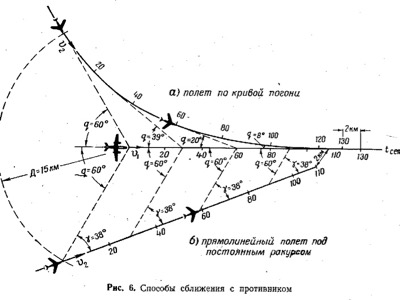
![Map shows the location of seawater samples taken by scientists and citizen scientists that were analyzed at the Woods Hole Oceanographic Institution for radioactive cesium as part of Our Radioactive Ocean. Cesium-137 is found throughout the Pacific Ocean and was detectable in all samples collected, while cesium-134 (yellow/orange dots), an indicator of contamination from Fukushima, has been observed offshore and in select coastal areas. (Figure by Jessica Drysdale, Woods Hole Oceanographic Institution) [Gallery Photo]](http://www.whoi.edu/cms/images/mediarelations/OROMapRelease_350_409034.jpg)
![WHOI marine radiochemist Ken Buesseler in his lab. (Photo by Tom Kleindinst, Woods Hole Oceanographic Institution) [Gallery Photo]](http://www.whoi.edu/cms/images/mediarelations/Buesseler_350_409054.jpg)









 Nelson Davila, Venezuelan ambassador to Australia, spoke to teleSUR English about what the global and regional consequences could be if the Venezuelan opposition were to make gains in the elections.
Nelson Davila, Venezuelan ambassador to Australia, spoke to teleSUR English about what the global and regional consequences could be if the Venezuelan opposition were to make gains in the elections.  In the upcoming parliamentary elections in Venezuela on the 6th of December, the PSUV candidates are…
In the upcoming parliamentary elections in Venezuela on the 6th of December, the PSUV candidates are… 

















